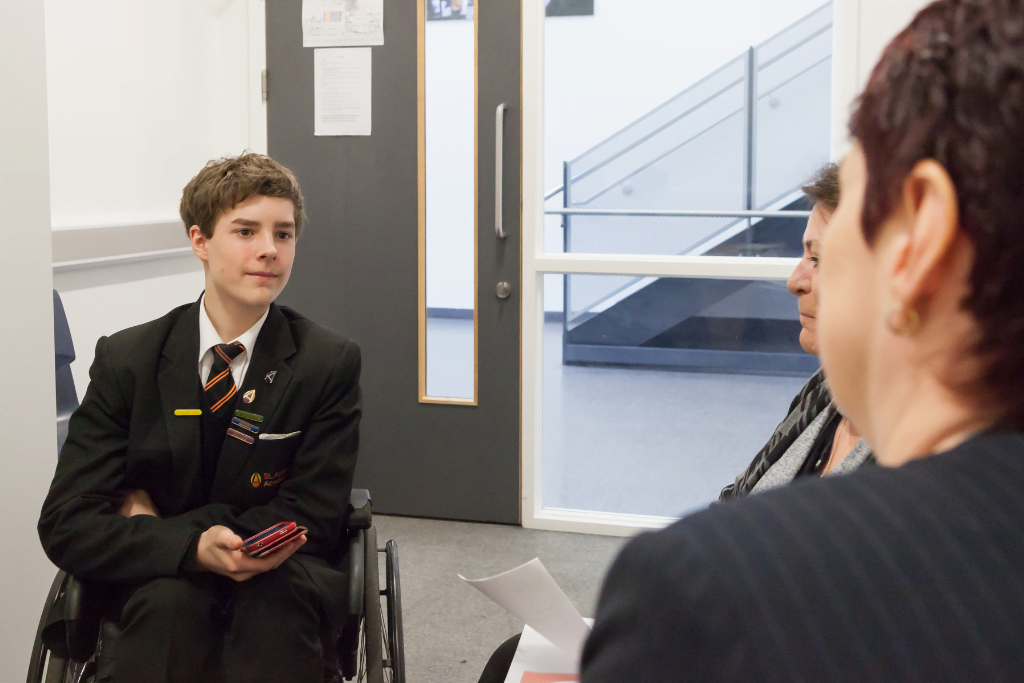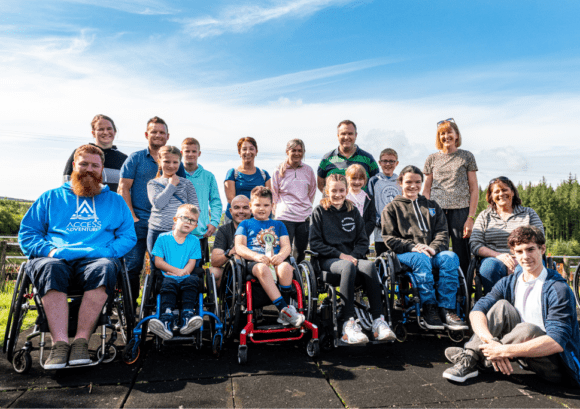Moving through education, transitions and careers
Students returning to school after a spinal cord injury will need support in all elements of education – learning, social, extracurricular, career planning and more. For a child or young person to be appropriately and fully included, as is their right, schools should recognise and offer this multi-faceted need for support. This section covers planning for education transitions and careers guidance.
Transition and leaving school
There has been a recent emphasis on the need to support young people leaving secondary school and going on to other education or other activities. This area of work is often called ‘Transitions’.

Transition planning
In Year 9, young people with an Education Health Care Plan should be supported to develop a Transition Plan that helps them to start thinking about educational and career choices after secondary school. This process begins with a Transition Review and should involve professionals who have been involved in the young person’s development, including the SENCO, social services, the GP or community nurse, someone from the careers service, an educational psychologist, and the young person and their parents. The plan outlines what the young person wants to achieve in the following few years and what support they will need to achieve it. It covers every aspect of the person’s life including education, employment, housing, health, transport and leisure activities.
For students with spinal cord injuries who do not have an EHCP, a Transition Plan is still a useful and valuable tool to use to prepare them to leave school feeling confident and well supported.
Career planning and guidance
The educational choices for a disabled young person at age 16 are the same as for any other 16-year old: to stay at school, go to a sixth form college or college of further education. Subsequently, depending on exam results, it may be possible to go on to university.
Materials from the Spinal Cord Injury Centre at the Royal National Orthopaedic Hospital, Stanmore
“Children and young people with spinal cord injuries and their parents need to know, from the time of injury, that adult employment should be an expectation and that it is important for independence and life satisfaction. Children growing up with a spinal cord injury need to keep pace with peers by doing activities that develop work skills and schools should play an integral role to help support this process of development.”
Zoe Chevalier, Clinical Psychologist, National Spinal Injuries Centre, Stoke Mandeville Hospital
Careers guidance and support for young people with spinal cord injuries should be approached as it would for any young person. However, schools should also recognise that this area may be sensitive for young people if they have had to rethink and re-evaluate previously held goals and expectations about what their future lives would hold.
“Children and young people will be thinking ‘What are my options?’ and they may need to rethink some things and re-evaluate how dreams going to fit. It’s important to promote and tell them there can be a healthy positive image of future.”
Zoe Chevalier, Clinical Psychologist, National Spinal Injuries Centre, Stoke Mandeville Hospital
Additionally, while educational outcomes at secondary school level for young people with spinal cord injuries are equal with the rest of the population, employment levels for spinally injured adults are lower. While people with spinal cord injuries may not have lower qualifications, it is harder for them to find and maintain employment. Therefore they may need extra support in thinking about their future career and what support mechanisms, tools, and resources they can use to make it happen.
Some important strategies that may help:
1. Provide positive reflections of life after having a spinal cord injury, including people in relationships, leading healthy lives and in careers.
2. Engage and connect positive role models with students. Contact Back Up Education Inclusion coordinator to get support with linking students to positive role models.
3. Consider connecting a teacher or staff member who has a good relationship with the student so the student has someone to talk to about emotional or difficult issues. Support this teacher to recognise when further assistance may need to be sought.
4. Liaise with the clinical psychology team or community mental health team if you have any concerns about the child’s mental health.
5. Provide information and training on use of assistive technology and equipment that can support independent living and career-related activities. See section 3.3.a for more information
Resources:
- Back Up
- Spinal Injuries Association
- ASPIRE GO BACK
Contact
If you’d like learn more about how we can support children and young people with a spinal cord injury, register your interest here and the team will get back to you shortly or give them a call on 020 8875 1805.



